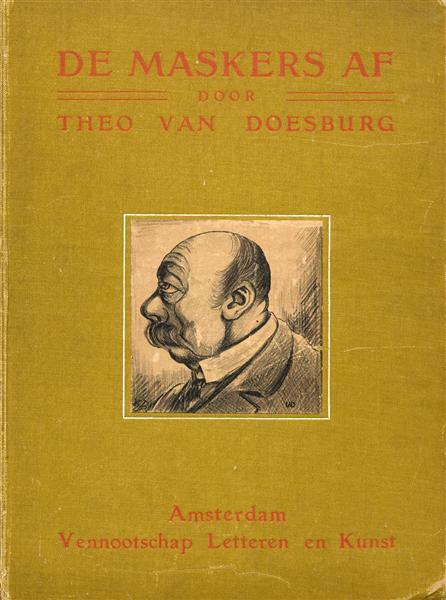Description
The painting "Cover of 'Las Mascaras'" by Theo Van Doesburg, created in 1910, is erected as an emblematic example of the synthesis between the artistic avant -garde of the twentieth century and the explorer of the forms and colors that characterize the movement of Stijl, of which Van Doesburg was one of his most prominent pioneers. This work, conceived as the cover for a literary publication, not only reflects Van Doesburg's conception about art and aesthetics, but also contextualizes dialogue between art, literature and contemporary life.
When observing the work, we are faced with a dynamic composition. The geometric structure and the use of straight lines that characterize Van Doesburg's work reveal an almost architectural approach. The form of the cover is subdivided into several spaces that, through color application, become functional areas of visual communication. The painting uses a visual language that distorts the traditional narrative of the book covers of its time, stripping the image of obvious literary references and, instead, proposing an aesthetic experience that invites the viewer to explore the depth of color and shape.
The use of color on "cover of 'Las Mascaras'" is remarkable. Primary tones especially red, blue and yellow function as pillars that maintain the visual structure of the work. This not only reflects a connection with contemporary theories of color, but, in turn, establishes a balance between shape and content, making the work simultaneously vibrant and serene. Each colored block seems to carry its own intention, contributing to the composition a sense of movement that contrasts with the stability of the forms.
One of the most intriguing characteristics of this painting is its reference to the masks, although in an abstract and non -literal sense. Van Doesburg moves away from figurative representation to offer us an allusion to the symbolic, where forms and colors can be interpreted as "masks" that hide or reveal identity and emotion. This duality becomes a starting point to think about how artistic forms can hide or reveal deeper meanings, resonating with the tensions of contemporary society that the artist sought to explore.
In terms of the historical context, "cover of 'Las Mascaras'" is located at a time where art sought to break the most entrenched traditions. The spirit of avant -garde art and the search for new forms of expression were in full swing, and Van Doesburg, although in their youth, was already well positioned to question the relationship between space, color and human experience. It was also a period where art was stripping of ornamentations and emphasizing the purity of the shape and essence of color.
In summary, "Cover of 'Las Mascaras'" is a work that encapsulates the artistic fervor of the early twentieth century and the aesthetic convictions of an artist who fought with modernity. The rich complexity of its composition, its color treatment and its thematic depth are faithful reflection of the concerns of its time. Theo Van Doesburg, through this cover, not only establishes a dialogue with literature, but also invites the viewer to question the role of art in the construction of meanings in a world in constant transformation.
KUADROS ©, a famous paint on your wall.
Hand-made oil painting reproductions, with the quality of professional artists and the distinctive seal of KUADROS ©.
Art reproduction service with satisfaction guarantee. If you are not completely satisfied with the replica of your painting, we refund your money 100%.

